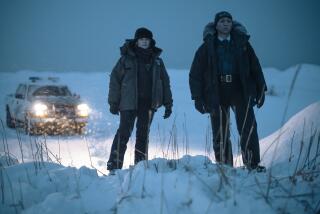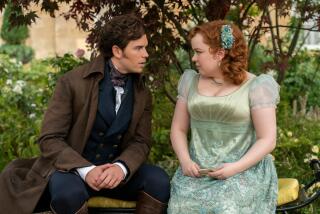Critic’s Notebook: With everything available, what will you watch?
- Share via
Video-rental giant Netflix last week announced a two-year licensing deal with CBS that will make a host of recent and ancient series — including such CBS-distributed series as “Twin Peaks,” which aired on ABC, and “Cheers” and “Star Trek,” from NBC — available to stream. It joins Amazon.com, now offering “unlimited instant videos” to its Prime members (who pay a premium for free, faster shipping of solid objects) and Hulu’s Hulu Plus, which makes available scores of current and back-catalog series from part-owners NBC, ABC and Fox, among others, in a brewing war of video subscription services.
The difference between a subscription service and the already well-established online shopping-cart model, where you buy or rent individual episodes of a TV series or movie instead of purchasing the DVD that contains them, is that the latter is a purchase that requires you to decide, in every instance, whether to put your money down, while the former buys you a general right to root around in the attic. Like cable television, such services, for which you pay at remote intervals, can create the illusion of costing nothing — and, indeed, that is no more than you would want to pay for much of what they currently offer. But these are early days.
In a way, this is just the latest chapter in a story that begins with the coming of television itself, when recycled theatrical features made their way onto the small screen, earning Universal Pictures money it never thought it’d squeeze again out of “Francis the Talking Mule” pictures, and keeping Humphrey Bogart and Busby Berkeley alive through the generations. Later, when cable crept in, the substance of broadcast TV was in turn repurposed and recontextualized, packaged with postmodern irony by the likes of Cartoon Network and TV Land, or aggregated according to theme into channels dedicated to mysteries, soap operas and game shows.
Consumer storage technologies such as record players and VCRs made what had been ephemeral arts — music, made of air, movies, made of light — into actual possessions. I come from a time when books and records and videos were valued as objects, as the bits and pieces out of which one constructed a private and even public self. But that wheel is turning again, back toward the insubstantial: Objects matter less now than information does, whether that information consists of an encyclopedia entry, a song, a movie, a television show or a photograph. What the Age of the Cloud sells is not stuff but access — access and abundance.
I myself still like a good book-shaped book, and prefer music packaged even in plastic cases, and will not surrender my “Faerie Tale Theatre” DVDs, even though their content is available on Hulu Plus. And yet I do think that there is something about these services that seems existentially more honest, truer to the facts of impermanent life: You can’t take it with you. There are still DVD sets I will want to own, but already I want to own fewer of them.
There is less psychic and practical responsibility in possessing the digital reduction of a book or CD or DVD than there is in owning the thing itself, which not only requires care in the present but disposition in the future to other temporary stewards. And there is even less in watching a television show beamed in from some server that will not even occupy space on your hard drive let alone your shelves, closets and garage. What you need to bring to this party, as choice multiplies upon choice, is discretion. You become not what you own but how you choose: You live in the moment, you are what you click.
More to Read
The complete guide to home viewing
Get Screen Gab for everything about the TV shows and streaming movies everyone’s talking about.
You may occasionally receive promotional content from the Los Angeles Times.







